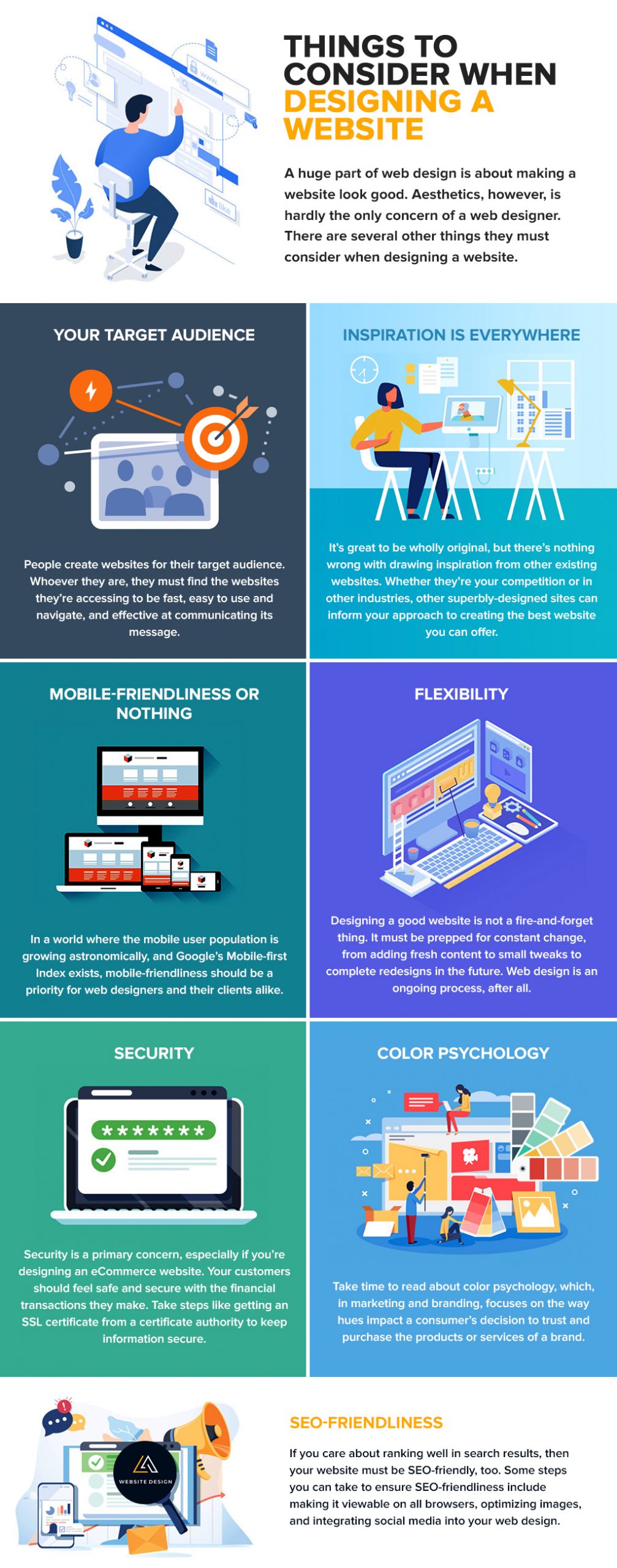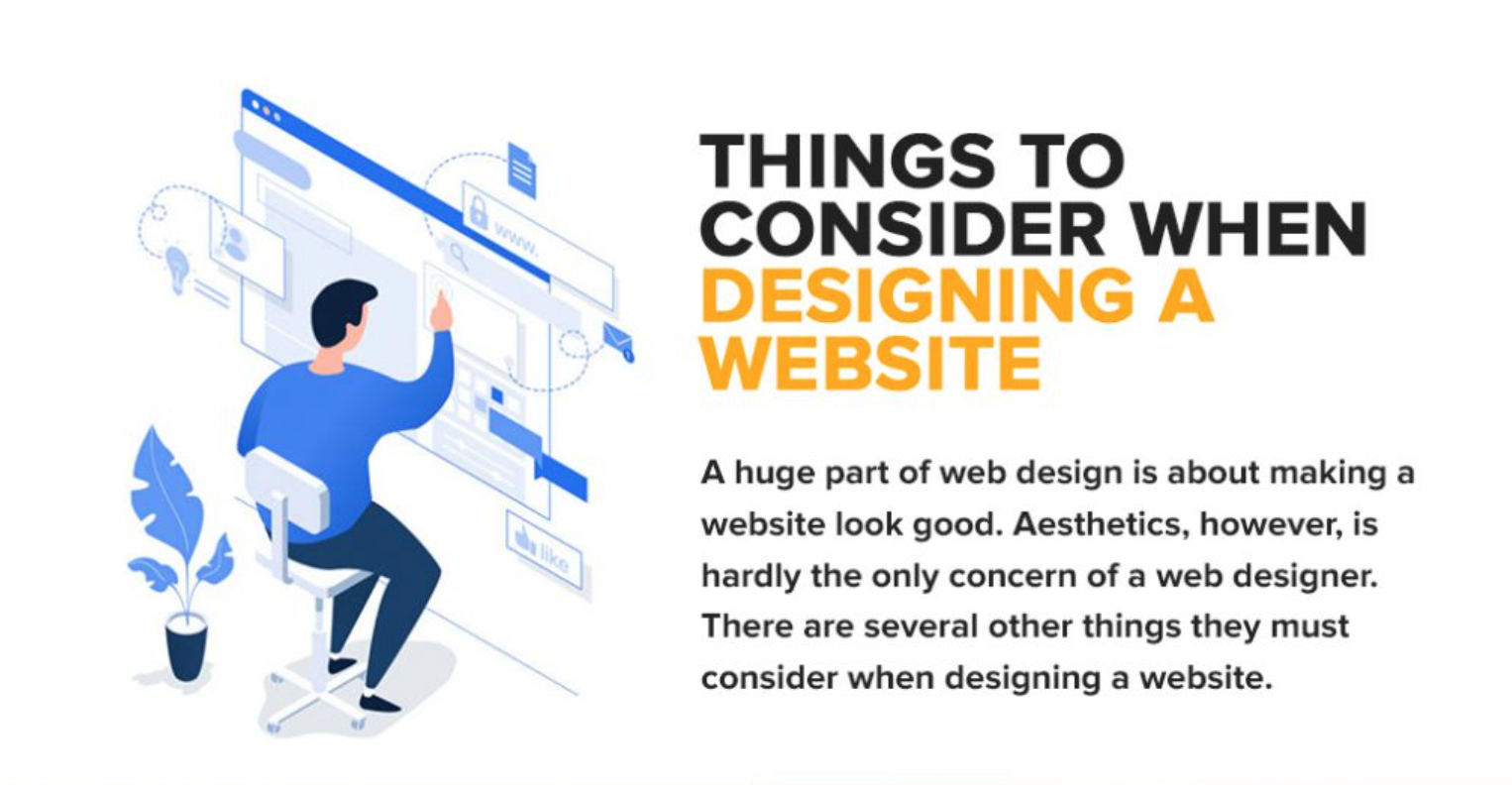Things to Consider When Designing A Website
Nowadays, you don’t have to be a web design specialist to know how important having a website is for your business. In the online world, your website serves as the face of your brand—a place old and potential customers visit to gain in-depth knowledge about your brand and its offers.
When done right, your website can also act as a capable lead-generating machine, turning your web traffic into quantifiable conversions. However, if you miss the mark, it can become a never-ending cycle of fixes and tweaks that can chew through your time and money.
Designing the Website of Your Dreams: Key Factors to Keep in Mind
Unfortunately, there have been many horror stories of companies building a website that does not function as intended or does not match the vision they have in mind. If you’re currently developing your website, how do you avoid a similar dilemma? Start by keeping the following crucial factors in mind when designing your site:
Identify your primary users.
Sure, this can seem like a no-brainer, but you’d be surprised how many websites are created without any user profile analysis. If you want to create a website that meets the needs of the people you are targeting, you need first to decide who these people are.
If anything, it is possible for your business to have multiple primary user groups. Consider it best to narrow down your user audiences, find out why they’re coming to your site, and strategize how you can design your website to meet their needs better.
Improve your visual brand.
How long has it been since you last revamped your brand’s logo? Does your site look dated or contemporary? Have you created a visual branding guideline? The importance of a visually appealing website cannot be overstated.
It is also essential to keep in mind that the more consistent, clear, and modern your branding is, the more it can add to your site’s visual appeal.
Include calls-to-action (CTAs).
Nothing represses the functionality of your site like a missing call-to-action. In a nutshell, a call-to-action or CTA is a question or statement that motivates your site visitors to do what you want them to do.
For instance, adding something like “Follow us on Twitter for more amazing gardening tips!” at the end of your blog post will inspire your readers to take action by following your brand on another social media channel.
Structure your website for scalability.
Don’t make the mistake of creating a website that will only meet your present needs. If anything, the planning stage is the best time to factor in the future. While unfortunate to note, many brands spend a massive amount of money creating a website, only to realize later that they need new functions and cannot integrate them.
With that said, scalability should rank high in your list of considerations when creating your website. It is also crucial to always have a backup plan to minimize the likelihood of your site getting compromised if one thing goes wrong.
Make communication with your customers effortless.
The ability to connect with the people you are targeting is another primary concern you can’t afford to overlook when developing your website. After all, your website exists for your target audience.
To ensure communication with your customers and visitors is a breeze, ask yourself the following questions:
- How can my customers reach me? (online chat, email, telephone, etc.)
- Who will receive communications from the clients?
- What hours will I be available to my customers?
- Can I benefit from chatbots or artificial intelligence?
- What security measures should I have in place when communicating with my site visitors?
As a general rule of thumb, always take into account your communication needs when designing your website. You can also check with your site developers so you can determine the right options for you.

Conclusion
Designing an attractive, functional, and scalable website that meets your needs and that of your customers is no easy feat. However, when you get it right, you’ll have a website that can generate massive traffic and bring in conversions for many years to come.
About the Author
Gabby Klesser is the Outreach Manager for LA Website Design, a digital marketing agency that has assembled a team of expert web designers and digital marketing strategists. She often writes about web design, UX, social media, technology, marketing, and starting a non-profit.
What Is WooCommerce Product Slider and Why Your Store Needs It
Why Do Product Images Matter So Much in Online Stores? When someone visits an online store the…
0 Comments9 Minutes
How to Streamline Your Customers’ Shopping Experience?
The goal for any online store is to make shopping as smooth as possible. When visitors move…
0 Comments8 Minutes
Strengthening Brand-Customer Relationships Through Gamified Loyalty Programs
Creating lasting connections with customers has become increasingly vital as the marketplace grows…
0 Comments6 Minutes
How to Use SEO and SEA Together in Search Engine Marketing
In digital marketing, search engine marketing (SEM) plays a critical role in improving online…
0 Comments10 Minutes
Content Marketing Growth Hacks: Real Shortcuts to Drive Traffic
Are you still lagging in content marketing? Sticking to these old strategies seems…
0 Comments10 Minutes
How to Build a Strong Local Following Using Social Media Marketing
In the days of likes, shares, and stories, local businesses have a golden opportunity to create…
0 Comments9 Minutes
Why WooCommerce is the Best Choice for Your Online Store?
WooCommerce stands out as a top option for anyone looking to build an online store. This platform…
0 Comments8 Minutes
How to Use AI-Powered SEO Tools for WordPress eCommerce
SEO is a critical factor in the success of any e-commerce WordPress store. As competition…
0 Comments11 Minutes








